Aquarius in Question
Heinz Sellner, Philippe Tailliez, and the dream of the deep
William Firebrace
The history of descending into the depths of the ocean is filled with dubious facts, half-truths, and improbable claims. How can one really tell that someone has traveled into the high-pressured darkness of the cold ocean, where no trace is left and no flag marks the discovery? What credence should we give, without any external verification, to the claims of a man who purports to have performed a seemingly impossible aquatic feat? These are the questions raised by the story of German engineer and inventor Heinz Sellner.
• • •
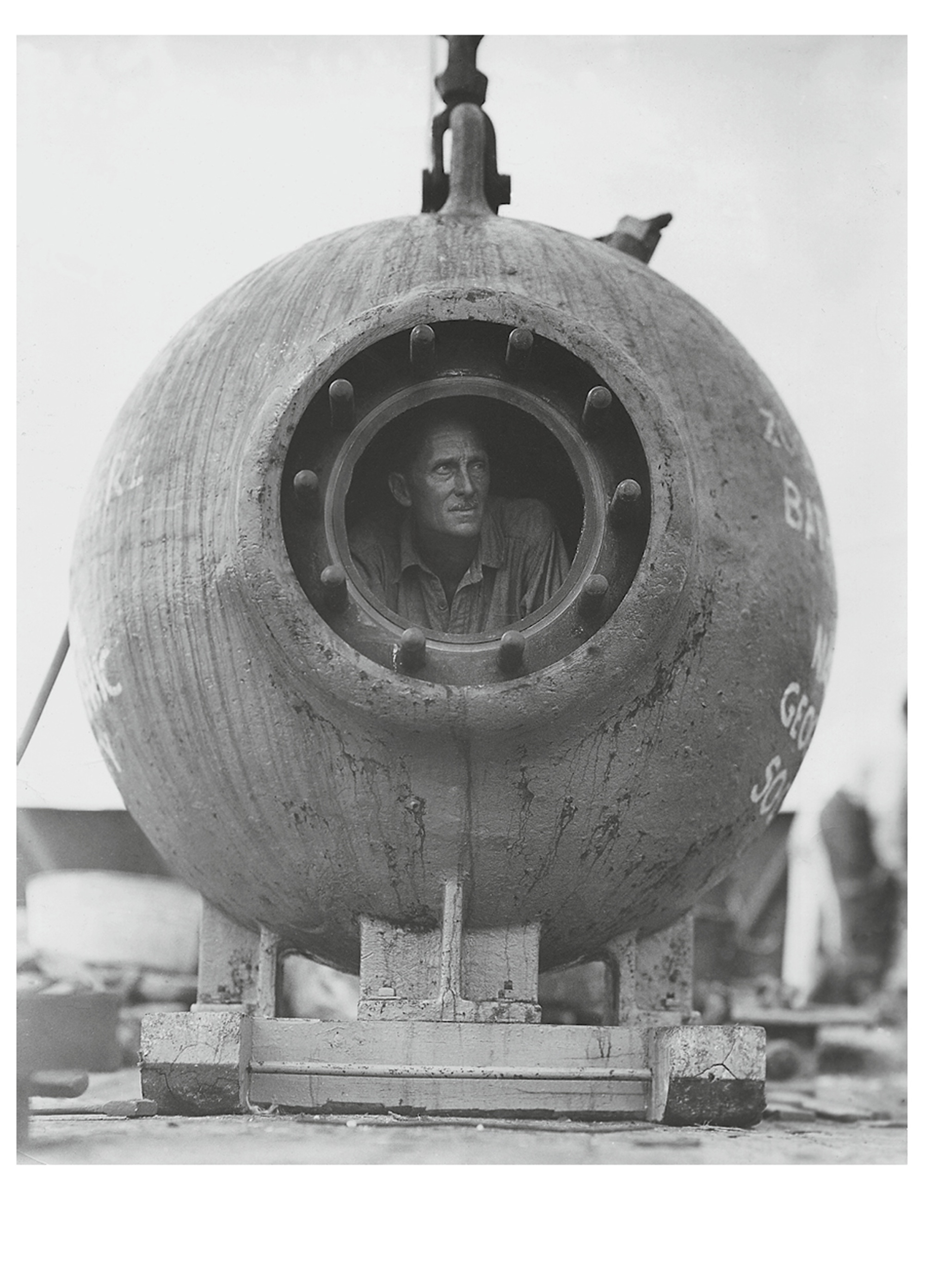
In 1934, Americans William Beebe and Otis Barton descended to a depth of 923 meters off the coast of Bermuda in a device known as the Bathysphere, a steel ball hung by a cable from a ship on the surface. There are photos of Beebe and Barton with the sphere, crew members who witnessed the dive, and both men later described their experiences in their respective books Half a Mile Down and Adventure on Land and under the Sea. The Bathysphere itself is now in the New York Aquarium at Coney Island.
In 1953, Pierre Willm and Georges Houot descended to a depth of over 2,000 meters off Toulon in the French bathyscaphe FNRS III, which was based on a design by the Swiss aeronautics pioneer August Piccard. The following year, they reached 4,050 meters off Dakar. The bathyscaphe was a vessel consisting of a steel sphere similar to the Bathysphere, but attached to the underside of a large float filled with gasoline, which controlled the descent and subsequent ascent. It functioned in a similar way to an aeronautical balloon, rising and falling according to the weight of the vessel in relationship to the density of the surrounding environment. There are many photos of the FNRS III, and one stunning picture, taken by the French diver Philippe Tailliez, of a diver swimming beside the great buoyancy tank of the bathyscaphe. Confusingly, this buoyancy tank resembles a conventional submarine, a fact that may affect elements of the story that follows. In his book Plongées sans câble, Tailliez recorded the story of the FNRS III, which today can be found in Toulon, mounted on a plinth beside the shore.
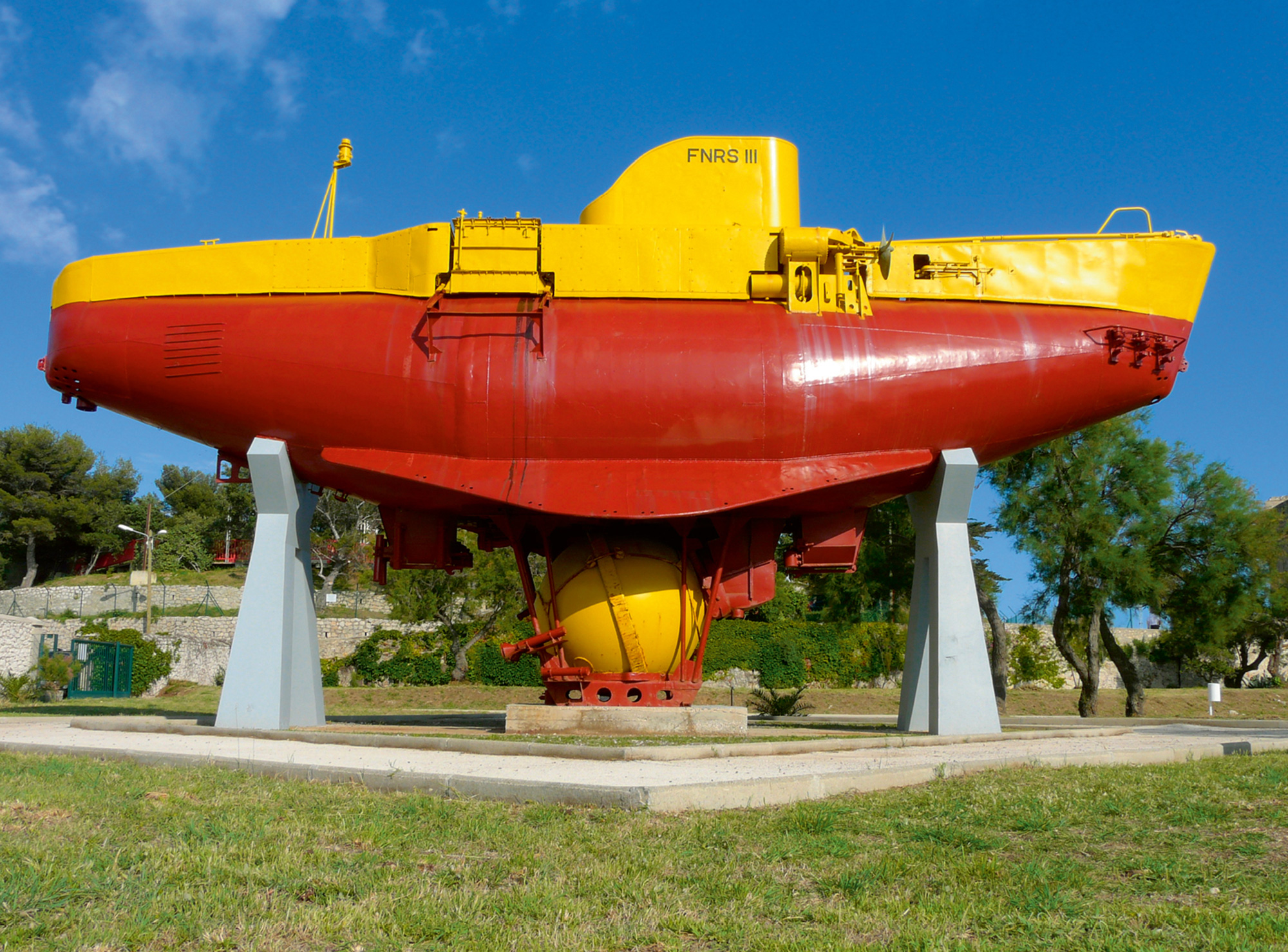
Histories of the undersea mention no deep descents into the ocean between these dates, almost two decades apart. But there was another descent, in 1947, for which there is no evidence apart from the word of a war prisoner in a Russian labor camp in the far north of Europe, on the sea of Murmansk. There are no photos of this vessel, no witnesses, and it can be found in no museum. The story of this descent is related by Tailliez in his book Aquarius (1961).
Together with Jacques-Yves Cousteau and Frédéric Dumas, Tailliez formed the pioneering French aqualung group known as les trois mousquemers, a play on Alexander Dumas’s famous trio of mousqueterres, hinting at the sense of dashing adventures associated with early undersea exploration. Tailliez, with Cousteau, made one of the first films shot by divers, Par dix-huit mètres de fond (1942). He was director of the French deep-sea research group RERS, and in the early 1950s took part in the first experiments with bathyscaphes carried out by August Piccard and thus was familiar with the technical requirements of vessels designed to descend into the depths. Tailliez became a naval officer on the Rhine in the mid-1950s, when by chance he came across a mention in a newspaper of Heinz Sellner, a German engineer looking for funds to construct a deep-sea vessel for the purpose of raising wrecks. Sellner happened to live in a village that Tailliez used to drive through on the way to his office. Tailliez spoke little German, Sellner little French, but in 1957 they met and began to communicate through an interpreter. The engineer and his family were struggling to survive; he had sold off his house to pay his debts, and was working as a truck driver. Sellner had a remarkable story to tell, one which only emerged gradually and which, since Sellner had no gift for writing, Tailliez first recorded in German on a tape recorder and only came to understand when these recordings had been translated into French.
Sellner’s story, which is related in his own words in Aquarius, is as follows. He was the son of a German naval engineer, and had spent his childhood making mechanical devices out of scrap found in his father’s workshop. During the war, he had been an army officer in the Wehrmacht, but had worked mainly as an engineer, maintaining and repairing vehicles. Toward the end of the war, he was captured by the Czechs, transferred to the Soviets, and in 1946 was sent to a camp in the port of Murmansk. Here the prisoners of war had the task of clearing the harbor, and the neighboring Tuloma river, of the many ships sunk by German air raids. The port had also become a storage zone for large quantities of captured German military equipment—trucks, submarines, engines, diving equipment, medical supplies, and various naval objects whose purpose had now been forgotten. The war now over, the Soviets had no immediate use for this equipment. Sellner was appointed one of the chief engineers in charge of the camp, responsible for repairing the equipment needed to raise the wrecks. The German prisoners of war survived in the harshest of conditions, partly by bartering on the black market the hardware they recovered in return for food, tobacco, and vodka, all of which could be used to bribe the guards and supervisors. Murmansk is located above the Arctic Circle, and there was nowhere for the prisoners to escape to, which mean that security inside the camp was left to the Germans themselves.
Sellner’s real interest was a dream he had first had as young man—to devise a submersible which would rise and fall according to a system he had invented using the liquefaction of air. In its gaseous state, air is diffuse and light, but when liquefied—as in a refrigeration system—it becomes comparatively compact and heavy. The change from one state to another creates the potential for a buoyancy device, first heavier than, then lighter than, water.
Here, a little scientific information is needed on the subject of buoyancy. The details are complex, but leaving aside variables such as the changing temperature and salinity of the surrounding water, the basic ideas are quite simple. In a normal submarine, such as a U-boat, vertical movement is controlled by allowing seawater into the buoyancy tanks placed on the outside of the hull in order to descend, and blowing out this water with compressed air in order to ascend. More water in the tanks makes the vessel heavier; more air, lighter. This system needs the submarine to store and then waste large amounts of compressed air. Piccard’s bathyscaphe, which of course went much deeper than a conventional submarine, worked instead by using a large buoyancy tank, full of gasoline, which being lighter than water caused the vessel to float. Metal weights attached to the underside of the bathyscaphe acted as ballast, making the whole vessel, now heavier than the water, descend; releasing the metal ballast when the desired depth had been reached allowed the gasoline-filled buoyancy tanks to carry the vessel upwards, much in the way that a hot air balloon carries a basket containing the passengers upward.
Sellner’s system is similar to a Piccard bathyscaphe in having a large buoyancy tank, but works more like the submarine in varying this buoyancy without the use of metal ballast. The compressed air system of the submarine is replaced with a liquefaction system. At the surface, the buoyancy tank is filled partly with seawater and partly with air, the proportion controlled so that the vessel just floats. The air is then cooled and liquefied, significantly reducing its volume and allowing more seawater into the tank through an opening in its bottom; this makes it heavier and causes the vessel to descend. When the pilot wishes to ascend, the process is simply reversed: the liquefied air is evaporated and expands, pushing the seawater out of the tank, and the vessel, now lighter than water, moves upward. The advantages of Sellner’s system are that no air is lost, since it is simply liquefied and then vaporized, and, more importantly, that the extreme change of density in the air gives the vessel much more lifting power than simply blowing out the buoyancy tanks with compressed air, making such a device suitable for lifting heavy objects such as undersea wrecks.
There is one complicating factor, particularly relevant for vessels descending into the depths of the abyss. The buoyancy tanks of both Piccard and Sellner’s bathyscaphes are open at the bottom to allow seawater to enter. The external pressure of the surrounding water increases as the vessel descends, compressing the contents of the buoyancy tanks and making it denser—this allows more seawater to enter, which in turn causes the rate of descent to accelerate. The vertical movement of the vessel has to be carefully controlled by continually adjusting the buoyancy, which requires considerable skill. The ascent has to be similarly controlled, because the reverse is occurring and the liquid in the buoyancy tanks is expanding as the external pressure of the water decreases, so that the vessel tends to ascend faster and faster. The whole issue of buoyancy is not just concerned with pragmatics, but also with a certain aesthetic; there is a beauty in the delicacy of these systems of balance and equilibrium, in the constant, minute adjustments made in response to small differences in the external environment.
Given the technical complexities involved in engineering submersibles, it’s even more remarkable that Sellner, who prior to 1946 had rarely even seen the sea, let alone design a ship, was able to convince his captors that his invention was viable. The Soviet supervisors, suitably bribed with vodka, decided to support his construction of a trial machine because if it turned out to be as buoyant as Sellner promised, it could be used in salvage efforts to raise ships sunk in the war. Sellner’s real aim, however, which he concealed from almost everyone except some trusted fellow prisoners, was to construct a primitive bathyscaphe capable of descending several hundred meters under the sea, a most unlikely ambition for a half-starved prisoner of war isolated above the Arctic Circle. Sellner must have known something of Piccard’s efforts in the late 1930s—halted by the war—to construct a bathyscaphe, but quite why he wished to follow the Frenchman’s example, rather than simply devise a submersible suitable for raising wrecks in a harbor, he never explains. In the transcript of the recording, he talks in great detail about the technical issues, but rarely about his desires. “Life had,” he recounted to Taillez, “no more meaning for me and no more value, apart from that absurd idea that I had the means of carrying out.”
Sellner selected an abandoned U-boat hull, some thirty meters long, to use as the buoyancy tank. He converted this hull for use with his gas liquefaction system, using the internal compartments between the bulkheads as variable buoyancy chambers so that the hull could be made to descend and ascend underwater. Sellner also discovered among the military junk a metal sphere some two meters in diameter, possibly originally a floating German observation post. This sphere was adapted and attached to the underside of the U-boat hull, as a chamber for the proposed one-man crew—himself. Searchlights, batteries, hatches, and so on were all also converted from available scrap. The whole vessel was constructed in different workshops within the camp so that no one except Sellner himself would be able to understand the ultimate aim.
Some of the other German prisoners of war became concerned that Sellner wished to escape in his submarine, and that if this happened they would all be shot by the Soviets. Sellner had to swear several times to make no escape attempt. According to his story, he steered the submarine out of Murmansk under the guise of helping raise wrecks in the Bay of Kola. He then submerged to pass under the patrol ships at the mouth of the bay, resurfaced and traveled several hundred miles around the top of Norway to a point west of Lapland, where the Greenland Sea is at its deepest. This voyage was performed by a man who had never navigated any kind of ship, let alone performed complex movements in three dimensions with a submarine. At this remote location, he used his liquid gas system to gradually lower the submersible to a depth of 2,400 meters (the sphere of Beebe and Barton, hanging from a cable, had reached just over 900 meters). The descent would have had to have been carefully controlled to allow for the increase in the external pressure of the water, needing the continual adjustments mentioned above. Sellner reported that after a struggle to master this process, he finally reached a depth slightly above the seafloor, according to his adapted depth gauge. He was wary of going any deeper for fear of striking a rock or becoming stuck in the mud.
Unlike William Beebe, a marine scientist who made a large number of observations on the luminescent deep sea marine life of the Bahamas, Sellner had no interest in actually discovering anything at the bottom of the sea—in the almost total darkness, there was nothing much there to discover. “There was,” he says in the recording, “little to be seen through the porthole, the lights were functioning correctly but their effect was so slight that I could make out nothing clearly. In any case I was so busy controlling the descent and my machinery that I had no time to look out.” It is difficult to imagine what it would be like to be alone inside a small metal sphere in the cold darkness at the bottom of the Greenland Sea, an unprecedented experience for any human being. Beebe and Barton in the 1930s, or Willm and Houot in the 1950s, both had companions on their journeys; Sellner was completely alone.
Sellner revaporized his liquid gas in the U-boat hull, and slowly resurfaced. The dive had lasted about eight hours. He returned to the Bay of Kola, then submerged again to prevent the Russian patrol ships noticing his arrival, rejoined his comrades engaged in raising wrecks at a pre-arranged underwater location, and returned to Murmansk. He scuttled the metal sphere in the river and removed all the gas liquefaction equipment from the U-boat, for fear of its real purpose being discovered by the Soviets.
Shortly after his voyage, Sellner became severely ill and was placed in a Soviet infirmary, then had the good luck to be repatriated to Germany. But the other German prisoners in the Murmansk camp, their work raising wrecks now complete, were sent east to Siberia and never returned home. Sellner presumed that all perished in the camps. All the witnesses were presumed dead. The sphere was at the bottom of the river, the hull scrapped. There was nothing to prove Sellner’s story, except his ability to construct a repeat version of the Murmansk bathyscaphe.
Tailliez believed in Sellner because of some quality he recognized in the man, which suggested someone who worked with his hands to repair and construct mechanical devices rather than invent stories. Tailliez was also convinced by Sellner’s ideas on the liquefaction of air for buoyancy, and with great difficulty obtained funds for him to construct a second bathyscaphe in a workshop on an island in the Rhine. Working virtually alone, Sellner constructed this vessel on the same principles as the first, again using scrap materials left over from the war. This time there was no U-boat hull or observation sphere, but plenty of sheet metal, engines, compressors, and miscellaneous scrap. All this is documented by amateur photographs of Sellner, a big fair-haired man, usually smoking a cigarette, on the quayside beside the Rhine: Sellner bending hoops, Sellner and his cats, Sellner repairing an engine, Sellner working on what looks like an oversized boiler encircled by metal rings, Sellner sorting out cables. If the Murmansk bathyscaphe was only recorded in memory, the Rhine bathyscaphe is documented in detail as a real construction. Conditions in Sellner’s workshop beside the Rhine were basic, and Sellner was working almost alone. The new vessel—baptized Aquarius II, in retroactive recognition of the first, unnamed Murmansk bathyscaphe—was shipped in 1958 to Marseille, the home base of Tailliez and Cousteau’s undersea research center, where more assistance was available, and where it was fitted out with the complex electrics and pipework needed for the vaporizers. However, on its first dive beside the Marseille quayside, Aquarius II failed to function properly; a problem with balancing the liquefaction system caused it to list badly and it was unable to descend. The very limited funds had now run out. “I blamed myself,” writes Tailliez, “for having blindly believed in the miracle of a homemade submarine, I blamed myself for chancing failure with makeshift accumulators. I blamed Sellner for having thought himself capable of carrying through a job that was beyond the strength of one man.” Aquarius II was lifted from the water and towed to the yards at Toulon, where some time later it was sold for scrap. The bathyscaphe had failed, throwing doubt on the truth of the Murmansk story.
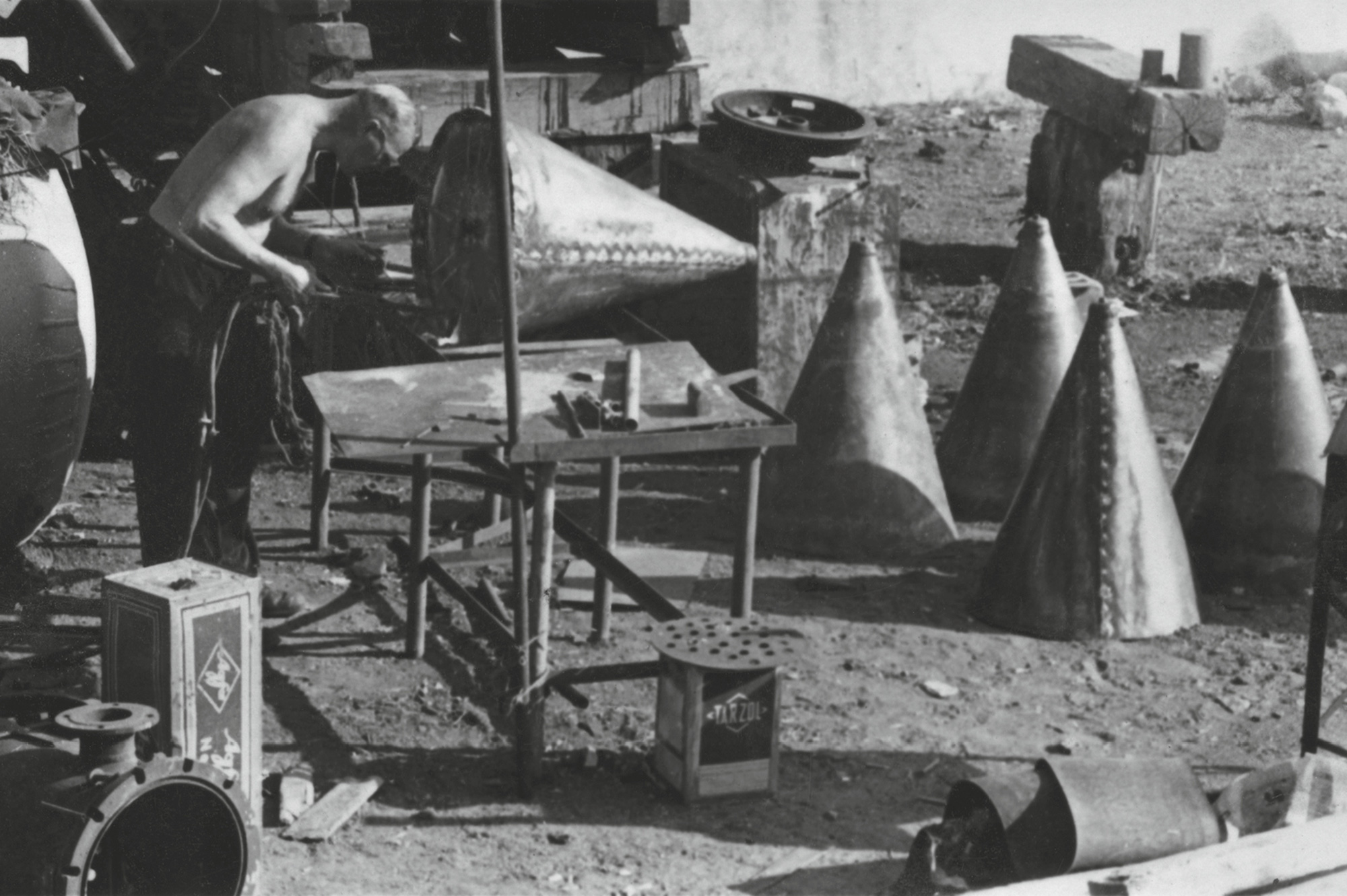
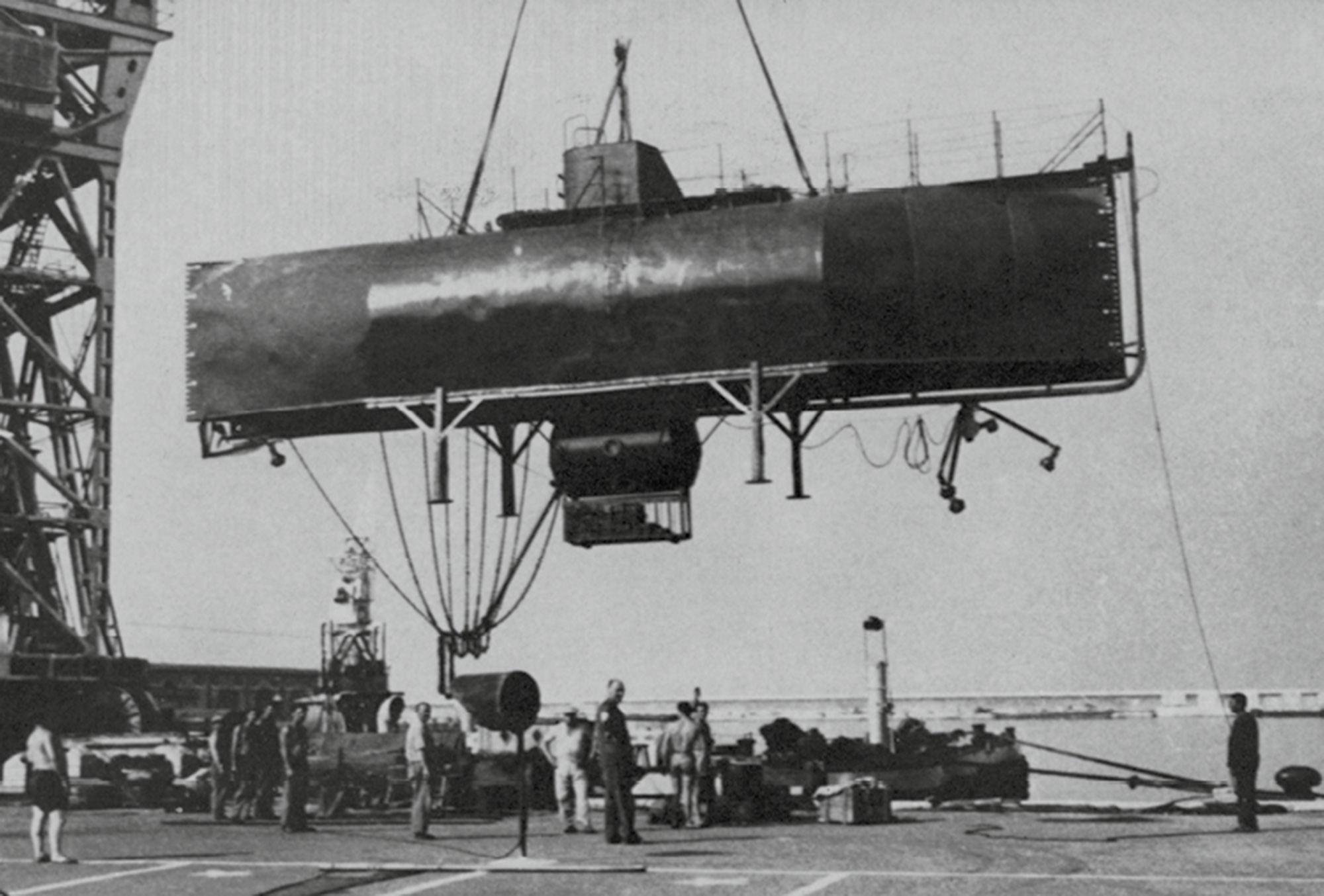
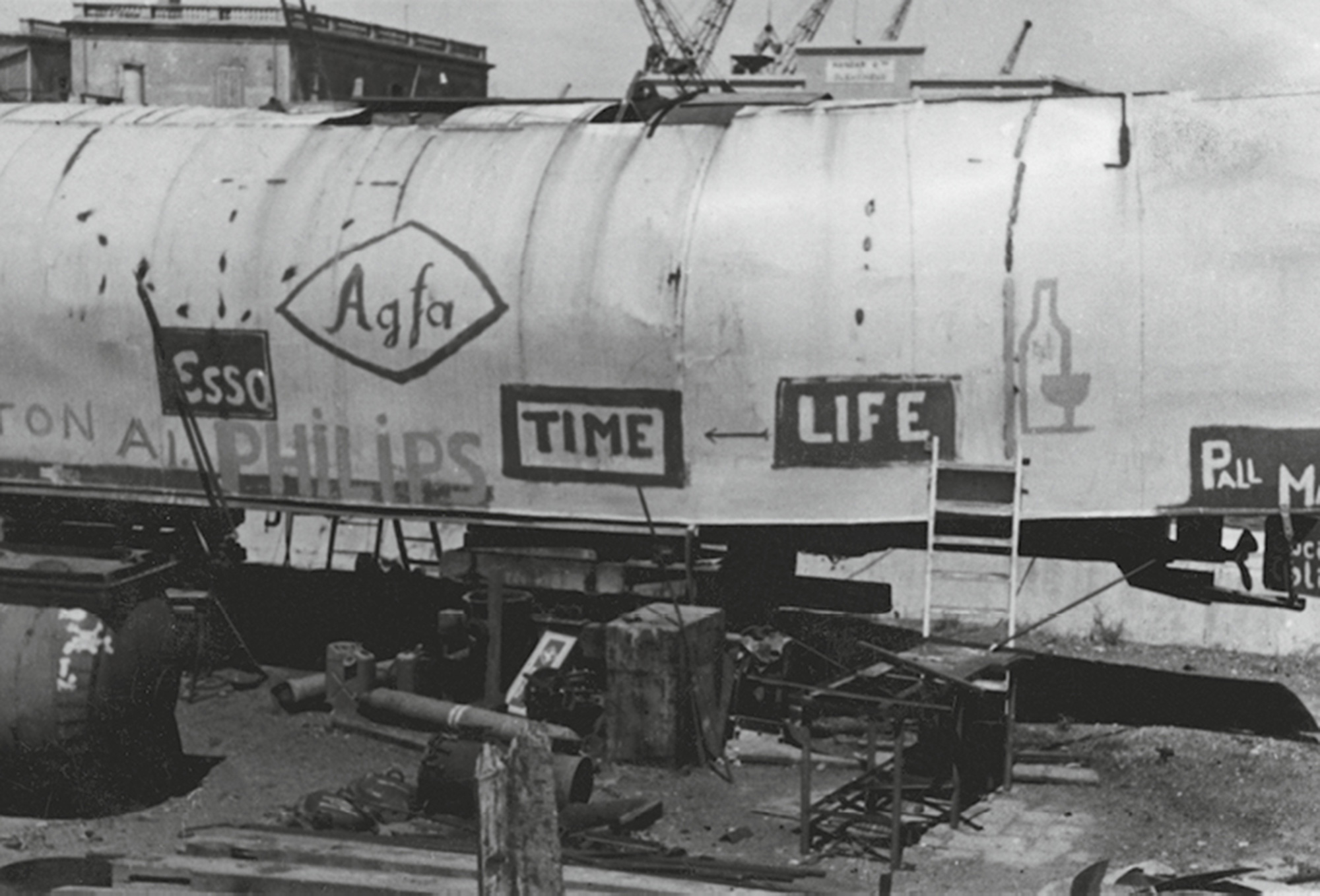
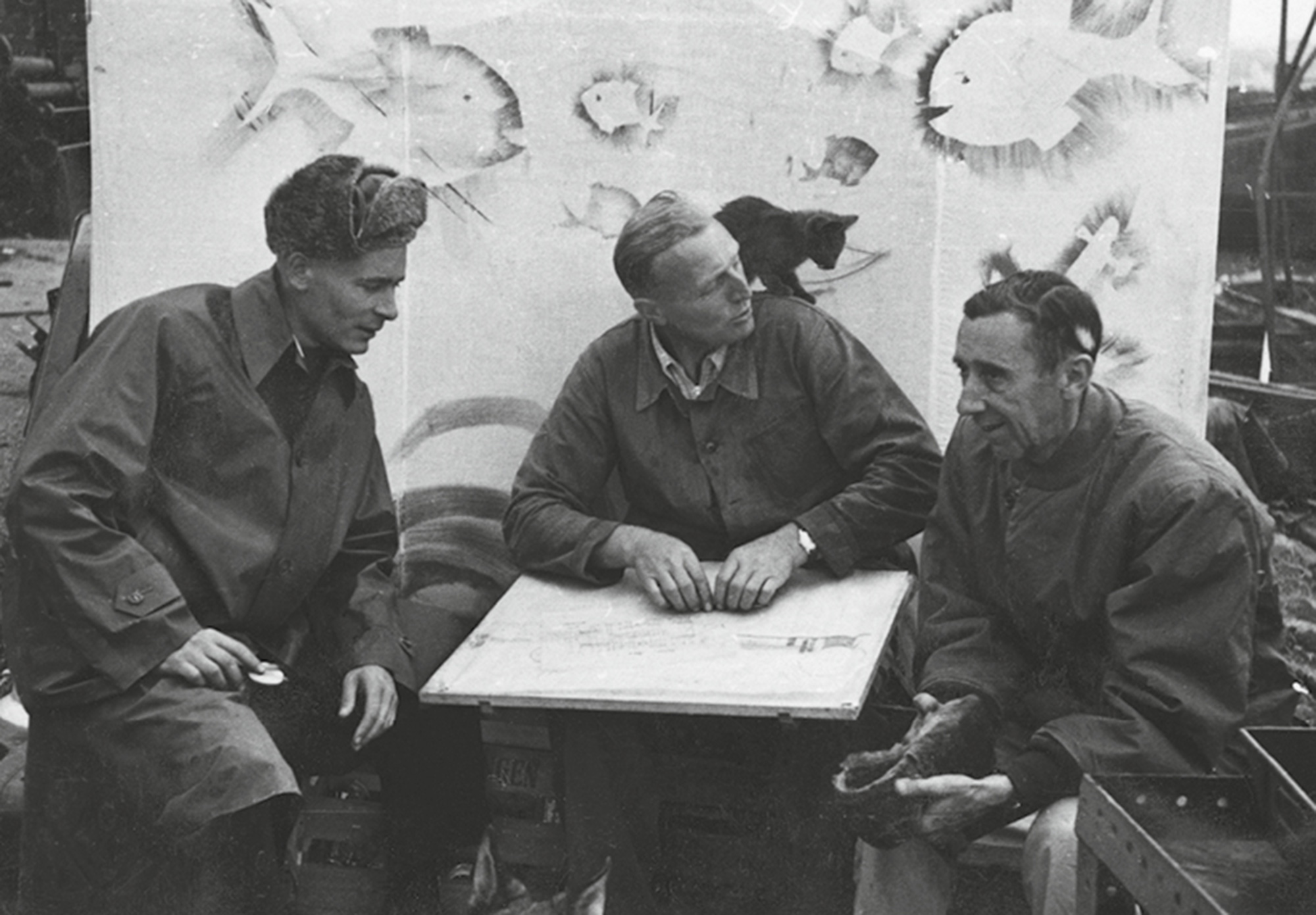
Aquarius II was indeed very much a homemade submarine, compared to 1950s bathyscaphes such as the FNRS III and the Trieste. All these bathyscaphes, however, were extraordinary machines that looked like something straight out of a Jules Verne novel. With their origins in Piccard’s experiments with aeronautical balloons, they belong in part to the air and in part to the water—their large buoyancy tanks dwarfing the small metal spheres that cling to them. Bathyscaphes have something of the quality of a machine constructed to fulfill a private dream—a personal voyage to the bottom of the ocean. But there is a difference between the FNRS III and the Trieste, on the one hand, and Sellner’s Aquarius II, on the other. The former are carefully engineered and built by a team of skilled professionals, while Aquarius II looks like a vessel that a man might build in his own workshop, for himself.
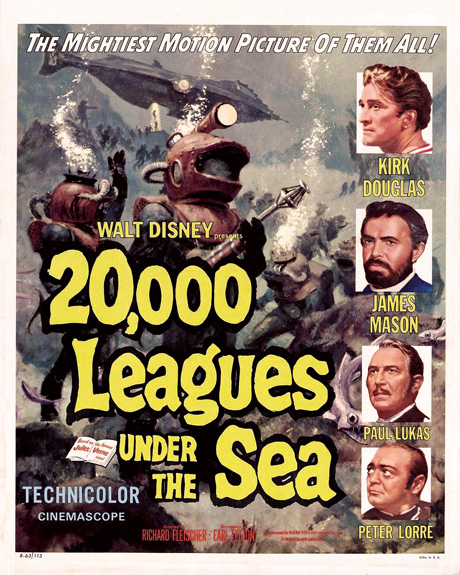
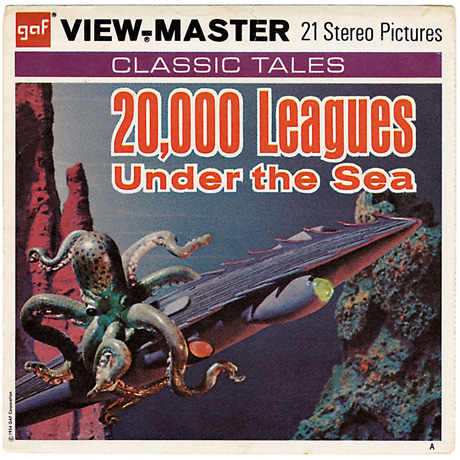
.jpg)
Tailliez understood the nature of machinery built by amateurs. The early versions of the aqualung had been constructed out of car parts, and he had himself constructed a small airplane from discarded metal pieces. Although disappointed by the failure of Aquarius II, which he attributed to his own excessive trust in Sellner’s ability to create such a vessel alone, he believed in the invention itself. Tailliez set up a society to develop Sellner’s ideas and to construct Aquarius III, this time working with models to refine the ideas. Photos of Sellner from this time show him constructing prototypes that successfully descended and rose in tanks. Tailliez mentions that they tested one model by having it raise a scale replica of the Nautilus, the vessel from Verne’s Twenty Thousand Leagues under the Sea—as though Sellner is now raising to the surface the sunken element from a piece of nineteenth-century fiction. In fact, the end of Tailliez’s book echoes Verne and the motto of the Nautilus: “One day soon we will begin work on the construction of a prototype, which we will name Aquarius III. ... With it we shall dive into the deep water, and it will become the first vessel in the service of man to correspond exactly with the three dimensions of marine space: mobilis in mobile.” Like Captain Nemo, the mysterious “Nobody” who disappears along with his secretly constructed submarine in a maelstrom off the Norwegian coast, Sellner too vanishes from his own undersea saga. There is a copy, accessible online, of a US patent application filed in 1962 by Tailliez and Sellner, with detailed engineering drawings and written description for a series of submersibles, all controlled by an air liquefaction system. But after this date, nothing. Every reference to him mentions his birth date of 1915, but no date of death is ever recorded.
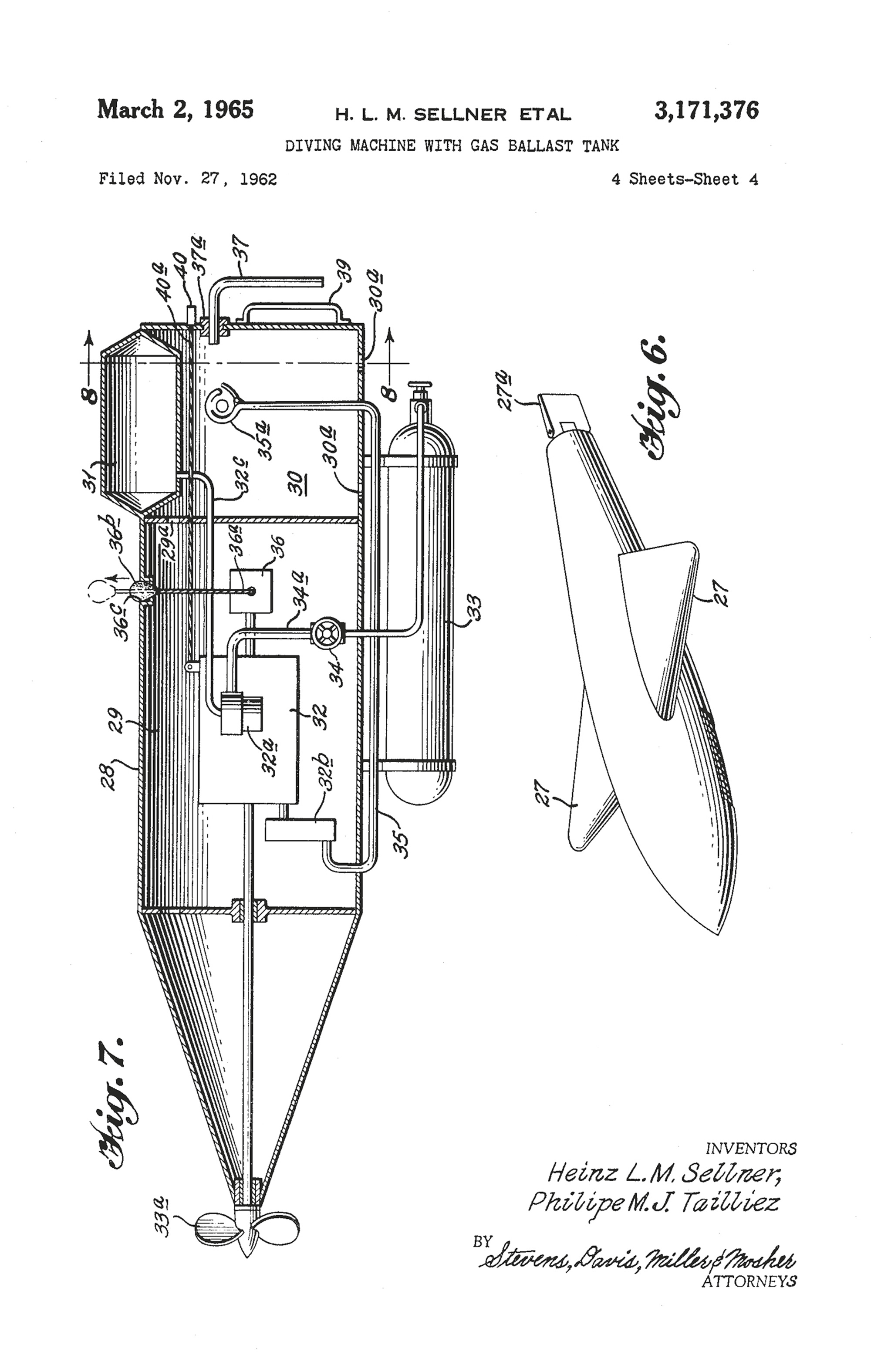
Following the epic 1960 descent of Jacques Piccard and Don Walsh in the bathyscaphe Trieste to the bottom of the Mariana Trench at a depth of just under eleven thousand meters, bathyscaphes gradually became outmoded. They were in effect simply underwater elevators with the sole function of descending to great depths, with no need to move horizontally—they were towed into position on the surface, or carried in specially adapted barges. (The Murmansk device had the capacity to move horizontally because it was constructed from a former U-boat.) Sellner’s liquid gas system never seems to have been developed, its mechanics presumably too complicated and unreliable. More sophisticated deep-sea submersibles, like the American Alvin from 1964 or France’s Nautile from 1984 were developed. Much more maneuverable and simpler to operate, their buoyancy was derived from syntactic foam, a strong lightweight material that does not compress whatever the surrounding pressure. Such submersibles use syntactic foam as a replacement for the bathyscaphe’s buoyancy tank, and are weighed down by disposable metal ballast in order to descend. Equipped with electric motors, they can move horizontally along the ocean floor for exploration and research purposes. These submersibles have in turn increasingly been replaced by unmanned, remotely operated undersea vehicles controlled from surface vessels, eliminating the need for a human crew. Such vehicles can gather data, scan the sea floor, make visual and acoustic recordings; we know more and more about the ocean depths, but humans go there less and less. The dream that guided projects such as those of Beebe, Piccard, and Sellner, on the other hand, depended entirely on them being there, even if in the case of Sellner his “direct experience” was one in which he neither saw nor recorded anything. In March 2012, the filmmaker James Cameron repeated Piccard and Walsh’s 1960 feat, descending solo to the bottom of the Mariana Trench in the Deepsea Challenger, which basically consists of a slab of syntactic foam, weighted down with ballast. But Cameron’s voyage was mainly a publicity stunt. Equipped with hi-tech recording devices—effectively an underwater film studio—he was able to record little more than the abysmal mud lit up by his vessel’s lights.
Toward the end of his life, Tailliez began to write a book entitled Un Océan d’Incertitude, an examination of the links between diving and memory. As a man who knew as much as anyone about the ocean, mostly from direct experience, he was interested in how all knowledge of the ocean is uncertain, and all memory of it tenuous. This explains why an intrinsic quality of so much undersea experience is that it is difficult to relate to others; oceanic memory operates differently than terrestrial memory, since there are so few distinct references around which to coordinate one’s recollections. When isolated from the known world and placed in a completely unfamiliar environment, human beings tend to lose the ability to discern what is external, and become susceptible to hallucination and delusion.
Tailliez died in 2002, this last book never completed. He had earlier written of Sellner: “You must judge for yourselves from the story. You will see in any case that the events do, in fact, fit together like the movement of the watch.” The engineer’s story is a miniaturized machine, every part in place, but perhaps telling another kind of time. Some parts of his narrative may have been borrowed from other stories, just as his submarine was created from parts of other machines. Tailliez did wonder whether Sellner’s story was a hallucination, a false memory brought on by the chaos of war, the deprivations of the camp, the separation from home, the desire to escape to a location even more isolated but where everything was under his control. Perhaps it doesn’t matter whether Sellner’s story is true. It is the perfect undersea tale, an almost impossible voyage narrated in immaculate detail, fact built upon fact, but completely unverifiable.
William Beebe, Half a Mile Down (New York: Harcourt Brace and Co., 1934) and Otis Barton, Adventure on Land and under the Sea (London: Longmans, Green, and Co., 1954). Beebe was the scientist and Barton the engineer, but they parted ways when Barton wanted to use the Bathysphere to make undersea horror films with sharks and bathing beauties, an approach Beebe considered unscientific.
Philippe Tailliez, Plongées sans câble (Grenoble: Arthuad, 1954). Jacques Cousteau’s film Le monde du Silence covers many of the same exploits, but Tailliez has the edge for aquatic lyricism.
Philippe Tailliez, Aquarius (Paris: Editions France-Empire, 1961). The book itself is now almost forgotten, but various elements of the story can be found online, often riddled with errors.
Jules Verne, Vingt mille lieues sous les mers (Paris: Hetzel, 1870). Still the best, if fictive, description of the undersea. Verne claims the Nautilus descends to sixteen kilometers, a depth which does not exist. Captain Nemo records the view of the underwater mountains with a camera.
William Firebrace is an architect and writer. His books include Marseille Mix (AA, 2010). Forthcoming books include The Missing Planet and Memo for Nemo.